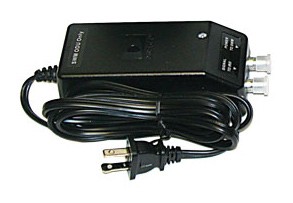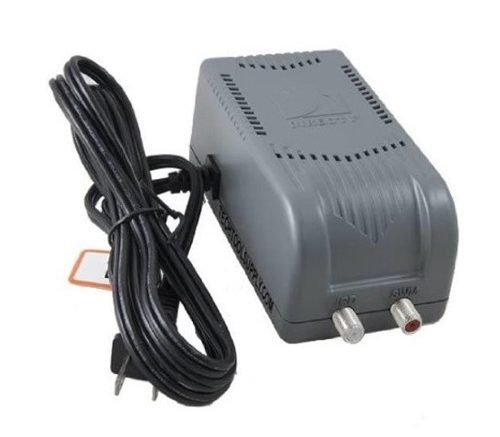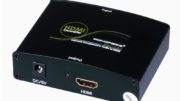I was recently contacted by a customer who wanted to know which power inserter to use for DIRECTV systems. Luckily, there’s only one choice these days. It’s the PI-29Z Power Inserter, pictured above. But, before you go, here’s a little more of the story.
Why (some) DIRECTV systems need a power inserter
The first thing you need to understand is that DIRECTV dishes aren’t just passive hunks of metal. There’s a lot of electronics as well as a low-noise amplifier inside them. This all takes power. Also, DIRECTV and all other satellite systems use voltage to help the receiver know which signals are coming in. As with most systems, DIRECTV systems use signals paired with either 13 volt or 18 volt power. This makes it possible for the receiver to know which set of signals it’s receiving, and allows for more channels in the system.
When DIRECTV service launched in 1994, the system didn’t need a power inserter. The receivers put out power that the dish used. This was true until 2009, when DIRECTV started using its SWM single wire multiswitch technology. This technology required more power than the DIRECTV receivers were designed to provide. As a result, new DIRECTV systems needed a power inserter to power the dish.
Don’t use this power inserter

This power inserter looks a lot like the one you should use. But, it isn’t. This is the old PI-21 power inserter. You can tell because it’s black, not grey. That’s a dead giveaway.
The PI-21 supplies 21 volts to the dish. That should be enough, and in an ideal situation, it is. But as this design began to age and be used in the field, DIRECTV techs found that it really didn’t hold up. That’s why it was discontinued in favor of the PI-29Z.
Can’t you use any power inserter? I mean, volts are volts, right?
Yes, technically, if you found any power inserter that supplied between 24 and 32 volts at the right amperage (1.4A) it would work. Sonora used to sell one that worked very well and was smaller than the DIRECTV model. But really, I don’t know why anyone would choose to look for something different, when the PI-29Z works well and it’s very easy to get from Solid Signal.
Configurations that work with the PI-29Z
I guess I could be snarky and just say “all of them” but here’s a partial list of configurations that are supported by DIRECTV’s PI-29Z power inserter:
- Dish to single receiver
- Dish to multiple receivers (with splitter)
- Dish to Genie DVR and wireless clients
- Dish to external multiswitch
- Dish to multiple external multiswitches (each has its own PI-29Z)
- Dish to SWM Expander (needs two power inserters)
Are there any cases when you don’t need a power inserter?
If you’re using a very old DIRECTV system or one that uses old-style receivers, there are some cases where you don’t need a power inserter. The key is to look at how many wires are coming straight from the dish. If it’s more than one, you probably don’t need a power inserter because the dish doesn’t use SWM technology. Sometimes you’ll find multiple lines from the dish running to an external multiswitch, and that needs a power inserter.
If you have a Genie system model HR54 or HS17, you can use it without a power inserter by running the Genie DVR to the red port on the DIRECTV splitter. This is a simpler installation, but a little more likely to fail because you’re relying on one box to do more work. Most of the time that isn’t a problem and millions of people do it that way.
Get what you need from Solid Signal
No matter what you need for your DIRECTV system, you’ll find it all when you shop at Solid Signal. Not sure what you need? Why not get some free tech support! We’ll help you plan the system of your dreams. Just call us at 888-233-7563 during East Coast business hours or fill out the form below. We’ll be happy to get right back to you!





